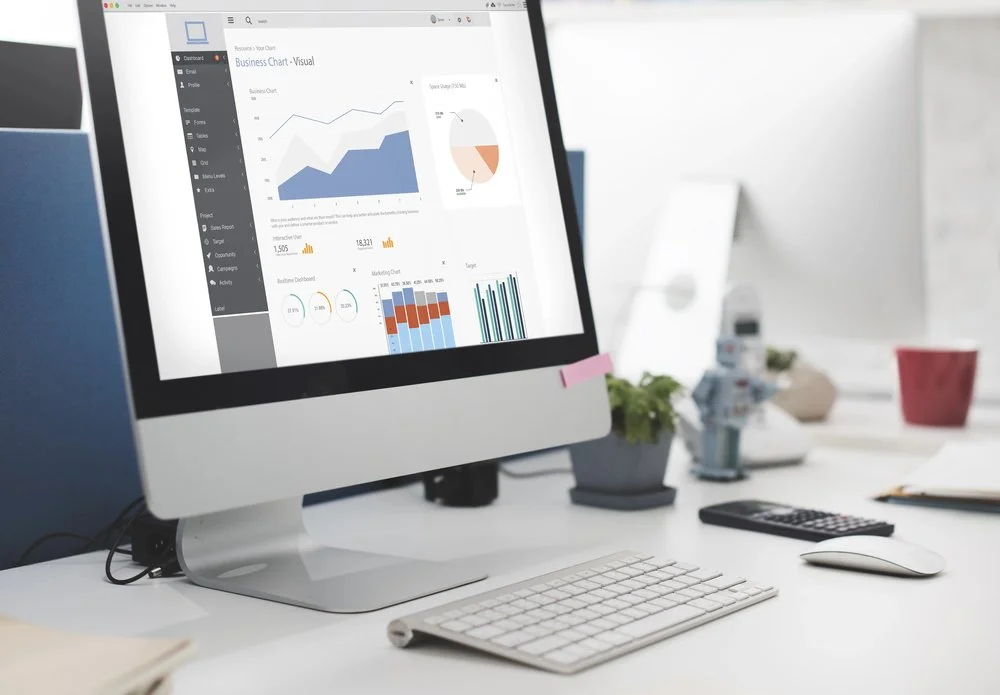Website analytics vs. experience analytics: why knowing the numbers isn't enough
If you're like most nonprofit leaders and small business owners I work with, you probably check Google Analytics more often than you'd like to admit. You know exactly how many people visited your donation page last month, which blog posts are getting the most traffic, and whether your numbers are trending up or down. It feels good to have that data at your fingertips, and there's a certain satisfaction in watching those visitor counts climb.
But here's the problem with those numbers: they only tell you what happened, not why it happened. You can see that 200 people landed on your volunteer application form, but you have no idea why 150 of them started filling it out and then stopped halfway through. You know that people are clicking your "Give Now" button, but you can't see that they're actually clicking it three times in frustration before they finally give up and leave your site entirely. The gap between what your analytics show you and what's actually happening on your website is bigger than most people realize.
That's the difference between regular analytics and experience analytics, and for nonprofits and small businesses trying to make every dollar count, understanding that difference can mean the gap between a website that converts and one that quietly loses opportunities every single day.
What experience analytics actually shows you
Regular analytics, or the ones we’re used to monitoring, give you the big picture: 500 people landed on your event registration page, or over 1,000 people visited your online giving page last month.
Experience analytics is more like watching over someone's shoulder as they use your site. You can see exactly where they pause, what confuses them, and what makes them leave. Using an Experience Analytics Platform changes the the game because it shows you the "why" behind the numbers.
Here's what that looks like in practice:
For a nonprofit: You might discover that donors on mobile phones can't easily tap your donation amount buttons because they're too small. Or that your email signup form is asking for too much information upfront, causing people to abandon it.
For a small business: You could find out that customers are trying to click on your phone number in your header (because it looks clickable), but nothing happens. Or that your product photos aren't loading fast enough on mobile, so people bounce before they see what you're selling.
According to the McKinsey Global Institute, data-driven organizations are 19 times more likely to be profitable. But you can't make good decisions if you don't have the right information. (If you want to explore more tools that help you understand what users are actually doing on your site, check out our guide to UX design tools.)
What you can actually do with this information
Experience analytics doesn't just benefit marketing teams. UX professionals increasingly rely on analytics data to identify problems, investigate causes, and supplement their research with real user behavior data.
Let me walk you through some real scenarios where experience analytics changes everything.
Scenario 1: Your donation form is losing people
Your analytics and heatmap data shows that 100 people visit your donation page, but only 15 actually complete a gift. That's a 15% conversion rate. You know something's wrong, but you don't know what.
With experience analytics, you watch a session replay and see that donors are getting stuck on the "employer matching" field. They don't know if they should skip it or fill it out, so they just leave. You make that field optional and add a quick explanation. Your conversion rate jumps to 25%.
Scenario 2: Mobile users aren't converting
You run a small e-commerce business and notice that mobile traffic is growing, but mobile sales aren't. Experience analytics shows you that mobile users are abandoning their carts at the shipping information step.
You watch the session replays and realize your shipping calculator is taking 10 seconds to load on mobile. By the time it appears, users have already left. You fix the technical issue, and mobile conversions increase by 40%.
Scenario 3: Your email campaigns aren't working
You send a beautiful email campaign promoting your new program, and lots of people click through to your landing page. But almost no one registers.
Experience analytics reveals that people are scrolling right past your registration button because it doesn't stand out from the rest of the page. You make the button larger and change the color. Registrations triple.
The tools that matter most
If you're going to invest in an experience analytics platform, you’ll want to look for these features:
Session replays: Watch actual recordings of people using your site. It sounds creepy, but it's anonymized and incredibly revealing. You'll see things you never would have guessed were problems.
Heatmaps: Visual maps that show you where people click, how far they scroll, and where they hover their mouse. This tells you what content people actually pay attention to.
Form analytics: See which form fields people abandon, which ones take them the longest to fill out, and where they give up entirely.
Mobile vs. desktop comparison: Your mobile experience is probably very different from your desktop experience. You need to know how.
The platform should also send you alerts when something breaks. If your donation form suddenly stops working or your page load time spikes, you want to know immediately, not three weeks later when you check your monthly report.
Making experience analytics work for your budget
I know what you're thinking: this sounds expensive.
Some experience analytics platforms are pricey. But there are options at different price points, and many offer free plans for smaller sites. Even the paid versions often cost less than what you'd lose from just one or two broken user experiences.
Here's what I tell my clients: start with one problem you already know you have. Maybe it's your contact form that nobody fills out. Or your event registration page that gets lots of visits but few sign-ups.
Use experience analytics to figure out exactly why that problem exists. Fix it. Measure the results. Then
You don't need to track everything all at once. You just need to track the things that actually affect your bottom line. (Want more guidance on turning your website data into actionable business decisions?Read our guide to using website analytics.)
Getting started with experience analytics
The marketing teams that do well aren't necessarily the ones with the biggest budgets. They're the ones who actually understand their users and fix the problems that get in the way.
If you're running a nonprofit, every barrier you remove from your donation process means more funding for your mission. If you're running a small business, every friction point you fix means more sales.
Regular analytics tell you what's happening. Experience analytics tell you why. And once you know why, you can actually do something about it.


